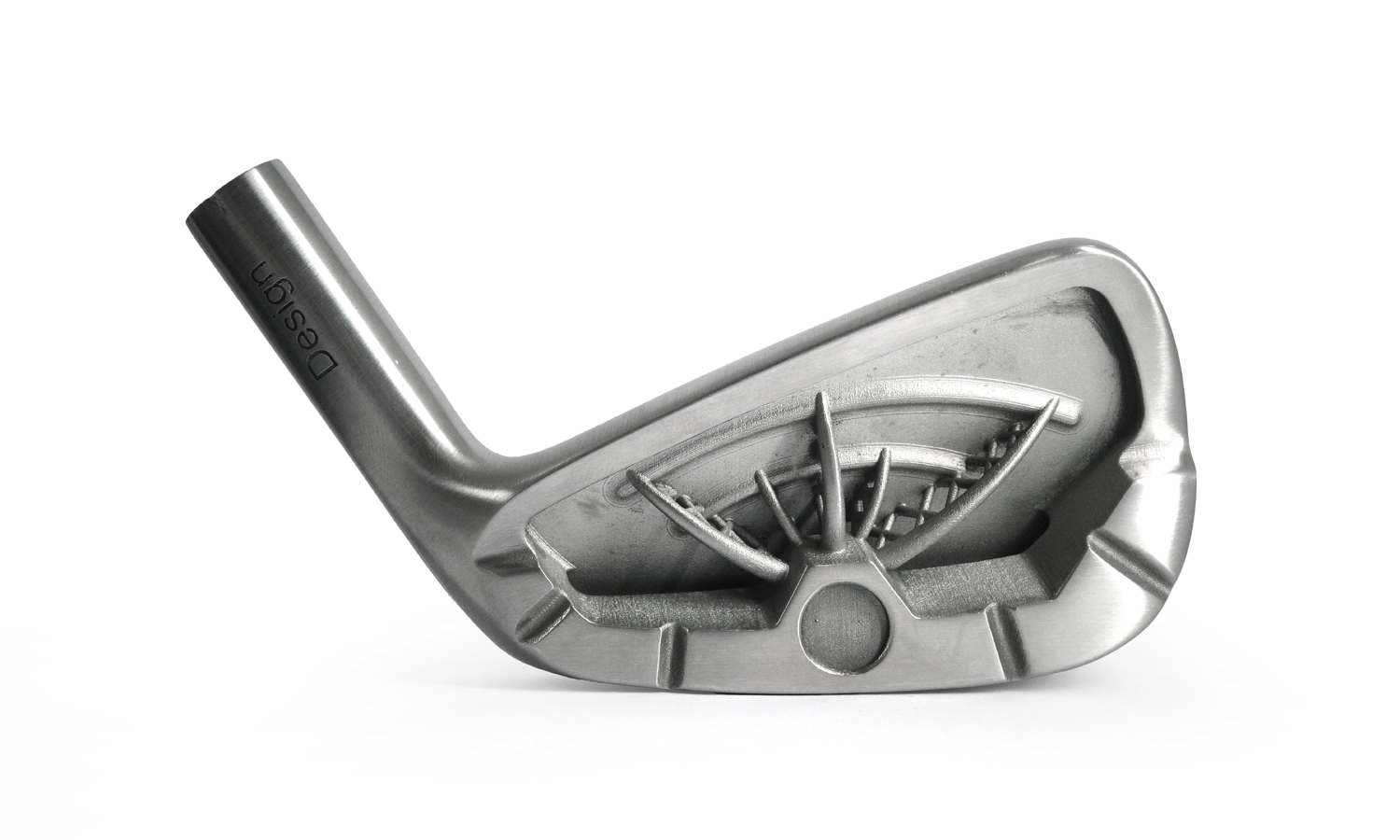- BinderJet 3D Printed 17-4PH Loop Handle Raw Finishing
- BinderJet 3D Printed SS316L Car Exterior Handle Cover
Gallery
About Project
Imagine a golf club head, not just a tool, but a work of art. A fusion of precision engineering and aesthetic appeal. This isn’t a dream; it’s a reality, thanks to the power of BinderJet 3D printing.
Crafted from high-performance SS316L stainless steel, this club head is a testament to the versatility and precision of additive manufacturing. The front side boasts a sleek, polished finish, designed to optimize impact and ball flight. The back side, however, is where the true innovation lies. Intricate geometric patterns, including ridges and grooves, not only enhance the visual appeal but also play a crucial role in weight distribution and aerodynamic performance.
The textured, matte raw finish on the back side offers a tactile contrast to the polished front. This design element not only adds to the club’s aesthetic appeal but also improves grip, ensuring a comfortable and secure hold.
Every detail, from the engraved “Design” on the hosel to the intricate patterns on the back, is meticulously crafted to deliver optimal performance. This is more than just a golf club; it’s a showcase of the future of manufacturing, where design freedom meets functional excellence.
Experience the Future of Manufacturing with FacFox
Want to bring your own innovative designs to life? FacFox offers state-of-the-art BinderJet metal 3D printing services to turn your ideas into reality. With our expertise and advanced technology, we can help you create complex, high-performance parts like this golf club head. Contact us today to learn more.
Solution
- Step 1: 3D Model Creation.┬ĀA digital 3D model of the golf club head was designed using computer-aided design (CAD) software.
- Step 2: Slice Preparation.┬ĀThe 3D model was sliced into thin, horizontal layers, each representing a cross-section of the final part.
- Step 3: Powder Bed Preparation.┬ĀA thin layer of stainless steel powder (SS316L) was spread evenly across a build plate.
- Step 4: Binder Jetting.┬ĀA print head, equipped with inkjet nozzles, selectively deposited a liquid binder onto the powder bed, adhering the powder particles together to form the shape of the first layer of the golf club head.
- Step 5: Powder Re-coating.┬ĀAfter each layer was printed, a roller evenly spread a new layer of powder over the previous one, covering the newly printed layer.
- Step 6: Layer-by-Layer Build-up.┬ĀThis process of binder jetting and powder recoating was repeated layer by layer until the entire golf club head was built.
- Step 7: Debinding.┬ĀThe printed part, still embedded in the powder, was subjected to a debinding process to remove the binder. This was typically done through thermal debinding, where the part was heated to evaporate the binder.
- Step 8: Sintering.┬ĀThe debinded part was sintered in a high-temperature furnace. This process fused the metal powder particles together, creating a solid, dense metal part.
- Step 9: Post-Processing.┬ĀPost-processing steps, such as machining, grinding, or polishing, were performed to achieve the desired surface finish and dimensional accuracy.
- Step 10: Quality Inspection.┬ĀThe finished golf club head was inspected to ensure it met quality standards and specifications.








